These ten shocking and often brutal banned horror films dared to go to extremes — earning controversy, infamy, and taboo status.
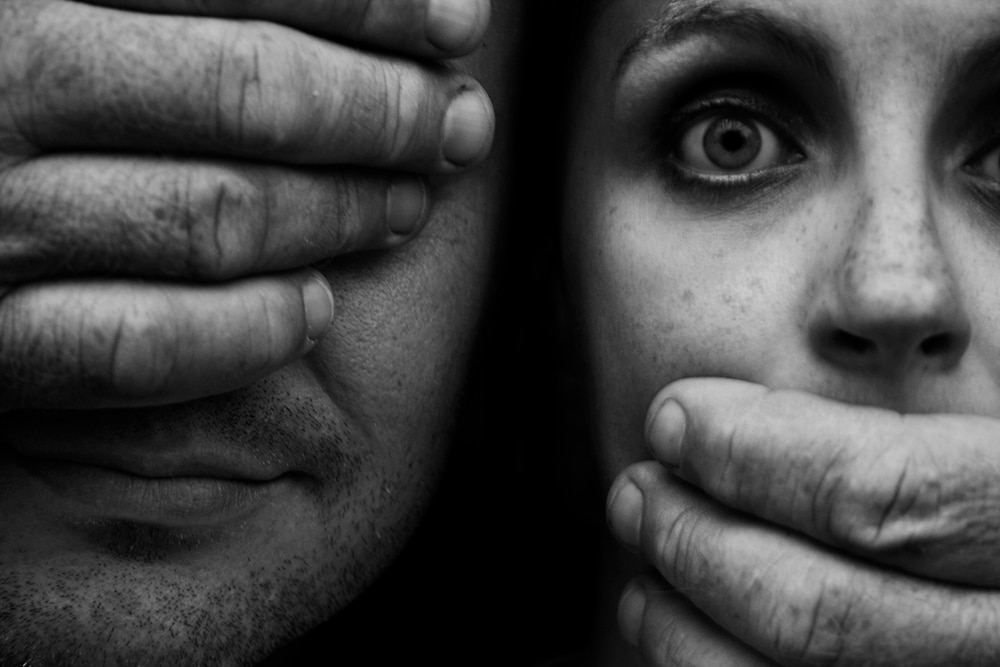
I can recall a time several years back when I found myself at a turning point as a horror movie fan. I had soaked in the hijinks of Freddy Krueger, taken leisurely strolls with Michael Myers on Halloween night, and thrilled at the stomach-shredding zombies who shambled the frames of George A. Romero’s Dead trilogy. And I dared wonder what other morbid curiosities the horror genre offered. It was a pivotal moment that cemented my unwavering commitment to all the genre had to offer. A baptism by fire, if you will.
While there are many of you out there who boast of wearing the badge of a horror fan, many casual enthusiasts are unaware that the genre has burrowed into some of the vilest crevices imaginable. Places where your very core is shaken and the ugliest sides of life are revealed, much like when one picks up a rock in the thick of the wilderness. You think you know what you’re shaking loose, and when you turn it over, you reveal the dirt-and-worm-caked underbelly that never manages to elicit a scrunched-face reaction, even when you know what awaits you on the underside of that rock.
Would you believe me if I were to tell you I’m squeamish? I feel as though I should make that crystal clear as I lead you into the nastiest realms of the horror genre. I hate the sight of blood; a mere nick of the finger or the very thought of having blood drawn makes me weak in the knees.
Horror is cathartic to me. It’s helped me come to terms with aspects of our existence that are inevitable. In a way, it’s almost therapeutic and strangely comforting.
This quest to push myself out of my comfort zone has taken me to the brink of seeking out films that push the boundaries of what many can take — so much so they have ended up banned at some point during their release.
So, at this point of my introduction, allow me to be your Francis B. Gross (a reference to one of the entries on our upcoming list), your ever-observing guide through the darkest horror realms to the horror films that have been buried, shamed, ripped from theaters, or caused wild controversies you may never have been previously aware of. These are some of the toughest of the tough, so take a two-part walk on the wild side with me.
Don’t worry; barf bags are available at your local box office…
1. Cannibal Holocaust (1980)
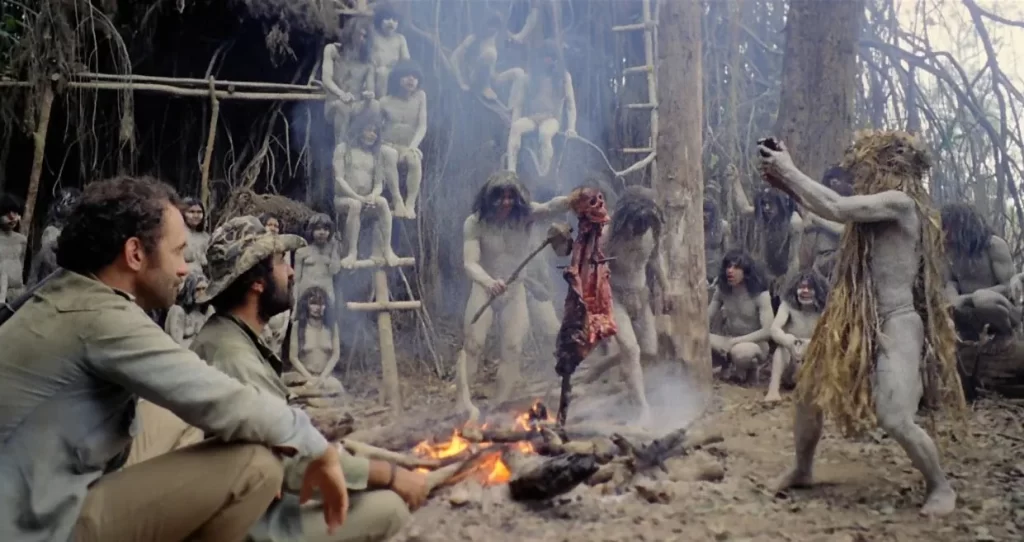
Places Banned:
United States, United Kingdom, Australia, Singapore, New Zealand, Finland, Norway, Iceland, and more. Upon release in Milan, director Ruggero Deodato was arrested on charges of obscenity.
What’s the Deal?
Arriving as a grungy, off-the-cuff hybrid of the bustling jungle cannibal genre that was hugely popular in Italy — fused with the stomach-churning “mondo” documentaries made famous by Gualtiero Jacopetti with his celluloid freakshow that was 1962’s Mondo Cane — Cannibal Holocaust set the world ablaze with its unflinching violence aimed at both man and beast.
Going on to be a pioneer of the “found footage” subgenre, Cannibal Holocaust remains unchallenged with its nauseating intensity, obtaining an unrivaled level of brutality that dares to explore the savagery lurking in the seemingly most civilized members of society.
But it is so unflinching in its deconstruction of a monster, going so far as to boast actual footage of animals being slaughtered for the camera and a brief collection of actual death footage to rub salt in the wound.
Upon release in Milan, Ruggero Deodato was arrested and forced to present his actors in person; a result of the special effects being so convincing and its approach so authentic, many were fooled into believing the actors were ACTUALLY slaughtered for the cameras.
CANNIBAL HOLOCAUST is immensely horrifying and a grindhouse staple that still makes waves with many today. Click To Tweet
Should I See It?
Yes, if you’re a fan of the horror genre, you should 100% see Cannibal Holocaust.
Hell, my mother has seen a good portion of this bad boy, and she was impressed by it! The deeper digs maintain a level of respect, and the artistry is unblinking. I personally love it and would award it the label of one of the most upsetting movies on the market. It’s also the grandfather of the “found footage” flick that remains a fixture within horror itself.
That being said approach with caution. This is one harsh trek into the green inferno.
2. The Texas Chain Saw Massacre (1974)
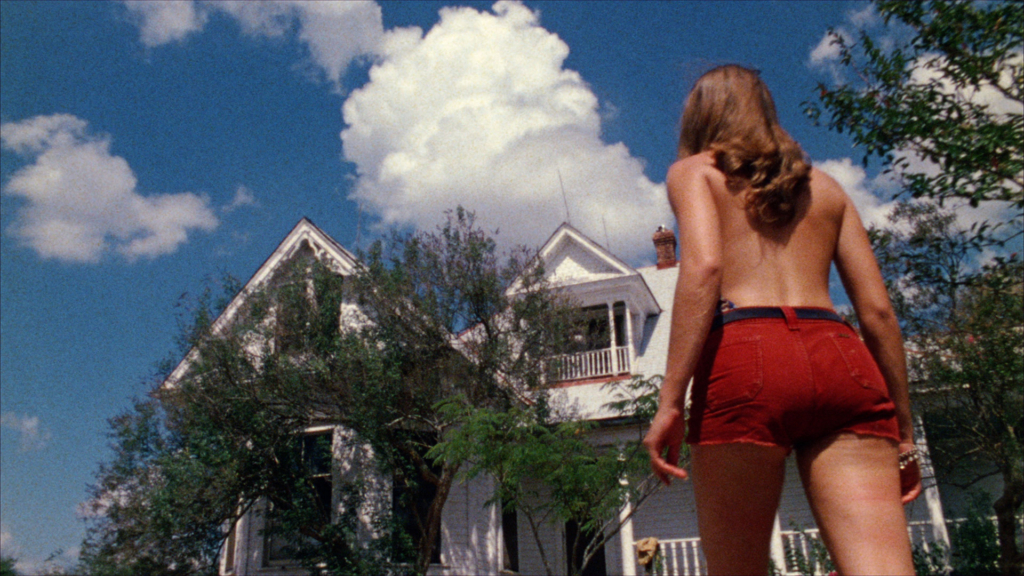
Places Banned:
Met with walkouts upon its initial release in the United States. Banned in Australia, Chile, Brazil, the United Kingdom, France, Sweden, Singapore, and various other countries.
What’s the Deal?
One of the pioneers of the slasher genre and almost equally as essential as Alfred Hitchcock’s Psycho, Tobe Hooper’s The Texas Chain Saw Massacre remains one of the most astoundingly rough examples of the slasher genre. It chews you up and spits you out like a wad of tobacco goo.
Using real-life murderer Ed Gein as its main inspiration, The Texas Chain Saw Massacre ushers us into the sweltering American Heartland that said no to the peace and love generation and got an uptick of violence and despair in its place.
The film creeps in with garbled top-of-the-hour news reports serving up stories of murders and graverobbing, a bleak commentary sprinkled over images of a decomposing corpse and exploding sun spots. And if that wasn’t dreary enough, the chilling monologue from John Laroquette adds another morbid layer of gloom. The veil is lifted, and we are venturing into a land cosmically plagued by rot and ruin in more ways than one.
Initially branded with an “X” rating by the MPAA and luring crowds with a “based on a true story” hook, The Texas Chain Saw Massacre horrified critics and audiences upon its release, with famed film critic Rex Reed deeming it “the most horrifying picture” he’d ever seen.
By today’s standards, the film is surprisingly tame, with very little in the way of blood and guts actually presented for the audience’s viewing pleasure. Instead, Hooper knocks you sideways with a psychologically damaging experience that leaves you in need of a shower and the mental equivalent of a tetanus shot.
Should I See It?
This one is a no-brainer, folks.
THE TEXAS CHAIN SAW MASSACRE is an essential pillar of the horror genre, and its skin-wearing madman is one of the most recognizable boogeymen in horror history. Click To Tweet
Its complex exploration of America’s entry into the 1970s adds more fuel to a horror film that is already as unwieldy as a buzzing chainsaw. You won’t soon forget the torment on display.
And for those who have never dared venture down this beaten path, be warned; The Texas Chain Saw Massacre is the all-too-real deal.
3. The Evil Dead (1981)
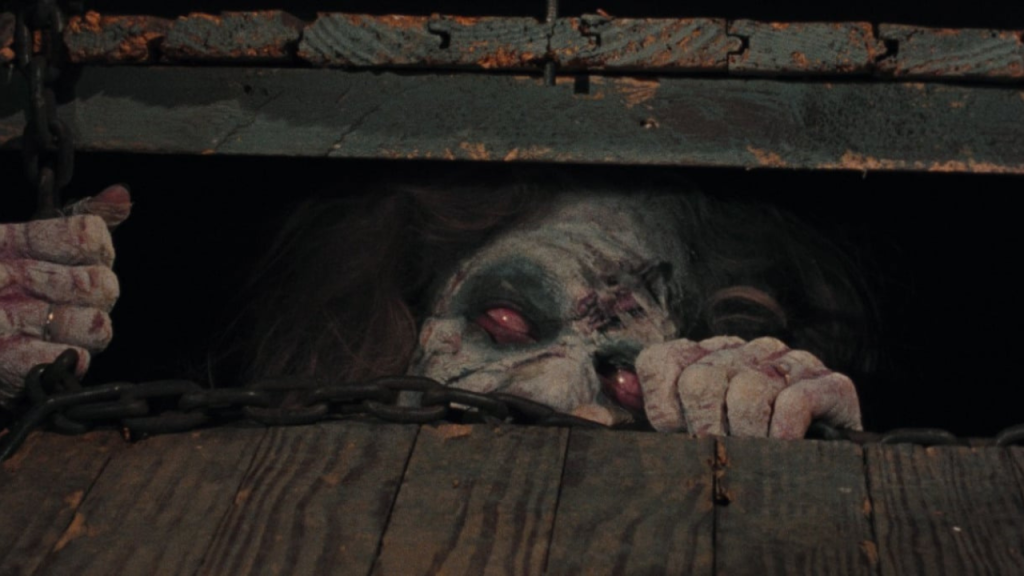
Places Banned:
United Kingdom (deemed “video nasty” shortly after a censored release), Finland, Singapore, and Ukraine; it remains banned to this day in various places across the globe.
What’s the Deal?
The biggest misconception that many have of Sam Raimi’s directorial debut is that it’s meant to be equal parts funny and scary. Let’s dispel that right here. The first Evil Dead is not meant to be funny. At all.
I’ll never forget showing Raimi’s lo-fi demonic gross-out to one of my best friends. It was around Halloween, just a few short years ago, watched on a dreary evening with the company of a few others joining in for a night of horror movie shenanigans. I’ll never forget my friend’s face when the end credits rolled. It was a contorted mixture of shock and awe, a testament to the power wielded by Raimi’s independent powerhouse.
It was like he had just witnessed a car wreck directly in front of him, stammering a response to the parade of ferocious depravity that stained those rustic walls red.
Whether it be the tree-rape sequence or the always-cringeworthy pencil-to-the-ankle, The Evil Dead is immensely violent and deeply disturbing, It rampages across the screen in an endless shower of violence that is guaranteed to illicit a death-rattle response by even the most hardened horror fans out there.
THE EVIL DEAD is a technical wonder of independent filmmaking with more guts and pus flying through the air than an emergency room. Click To Tweet
Should I See It?
Absolutely.
The Evil Dead is a splattery masterwork. A critical darling at the time of its release, it became a sleeper hit, with Raimi following it up in 1987 with Evil Dead II, which leaned heavier into slapstick comedy and solidified Bruce Campbell as a square-jawed horror heavyweight.
While many have taken the trip to this wicked little cabin in the woods, it’s impossible to deny its impact on the horror genre. And you have to admire the way it still manages to repulse today. Groovy!
4. Men Behind the Sun (1988)

Places Banned:
Banned in Australia and caused significant controversy in Japan. Director T.F. Mou went on to receive death threats in the wake of the film’s release. Today, it remains largely buried worldwide, without a proper restoration on physical media.
What’s the Deal?
Is there anything ghastlier than the atrocities man will commit against his fellow man?
To this day, the world continues to shudder at the horrors that were born out of the Second World War. While much of the focus is aimed at the Holocaust, the barbaric actions on the Japanese front remain largely in the shadows.
In 1988, director T.F. Mou painstakingly crafted the grotesque exploitation shocker Men Behind the Sun (also sometimes called Man Behind the Sun). This pulled the curtain back on Japan’s war atrocities committed at Unit 731, which was established to act as a research facility for biological weapons.
What Mou crafts here is a film that continues to be only mentioned in whispers around the internet, crafted in the most shocking ways imaginable.
Consistently finding itself amongst the most scandalous movies in existence, MEN BEHIND THE SUN is exceptionally fierce and upsetting. Click To Tweet
Mou lingers on the depraved experiments performed on the Chinese prisoners, which include special effects that used real human limbs and the actual corpse of a recently deceased young boy, which was donated by the deceased’s family. If that’s not controversial enough, wait until you bear witness to the sequence which finds members of 731 tossing a live cat to a swarm of ravenous rats, which is just as upsetting as seeing a man locked inside a decompression chamber, only to have his intestines be ripped out of his soiled anus in static, overhead detail.
Needless to say, if you think you’re ready for this film, you’re not. And I haven’t even scratched the surface of it.
Should I See It?
While history is certainly important to remember, The Man Behind the Sun is such a dour, depressing, and rancid endeavor that it’s hard for me to recommend the film outright.
The level of genuine gore is all but promised to push some over the edge, myself included on that list. And while certain aspects of the film are admirable in their staunch authenticity, The Man Behind the Sun goes way too far without showing anything resembling empathy for its subject matter.
This is a film that seems to exist simply to provoke.
5. Faces of Death (1978)
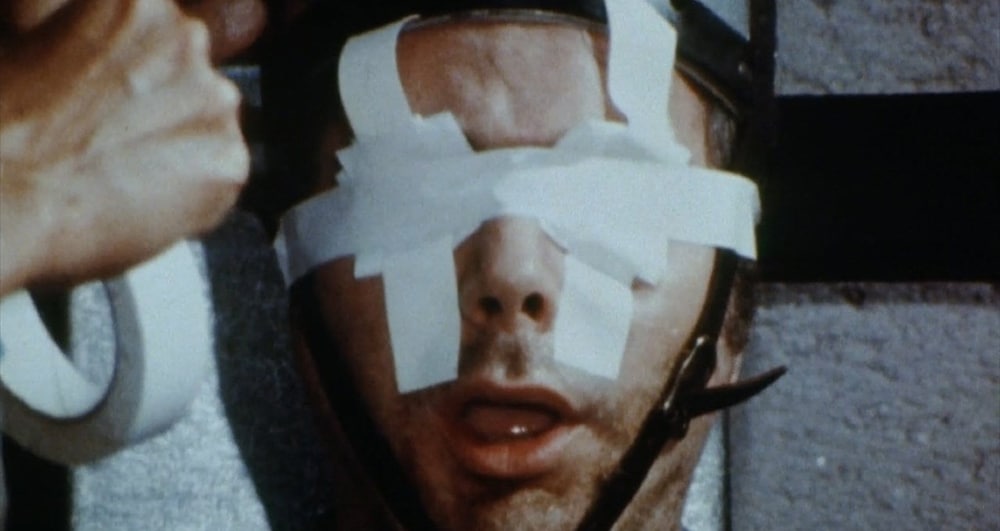
Places Banned:
Claims to be banned in “46 countries.” Deemed “video nasty” in the United Kingdom. Remains controversial to this day.
What’s the Deal?
It was long the topic of every lunch table across America, where kids dared and taunted each other to watch it as some kind of adolescent endurance test. But I’m here to report that Faces of Death is actually somewhat of a fraud.
Yes, this “mondo” knockoff directed by John Alan Schwartz is largely comprised of staged “death scenes,” some of which can oftentimes be pretty convincing, specifically a grisly shootout between responding police and a perp that murdered his family.
While significant portions of the film are faked, Faces of Death does manage to work some real death footage in between staged scenes featuring electrocution, the infamous “monkey brain” dinner sequence, or the satanic cult slaughtering some poor victim and then having an orgy in their blood. There is grainy footage of suicide victims, twisted metal accident sites, and jittery news coverage of the aftermath of PSA Flight 182’s crash into a San Diego suburb that splattered human remains all over the area (this is one of the most grueling moments within the film).
Giving it a smidge more credibility is real footage of animals being slaughtered, which is another aspect that has made Faces of Death such a scandalous slice of sleaze.
Upon its release, the film was a hit with those seeking a sideshow spectacle in the spirit of the voyeuristic Italian “mondo” movies. It was largely dismissed by critics, many of whom denounced both the film and those who filled the seats.
In 1986, the film would inspire 14-year-old Rob Matthews to murder fellow classmate Shaun Ouilette, stating Faces of Death made him curious about what it would be like to actually murder someone.
Should I See It?
I’d honestly only recommend Faces of Death to those who were absolutely stone-faced and serious about expanding their knowledge of the horror genre or were genuinely intrigued about plunging into the deepest depths of exploitation cinema.
Portions of the film, presented to us by a narrator called Francis B. Gross (hey, you referenced that earlier?!), can teeter on the brink of monotonous.
Still, FACES OF DEATH lands a number of genuine shocks that allow it to barely maintain its reputation as one of the most infamous movies in existence. Click To Tweet
There are far tougher films to endure, believe me, but Faces of Death walks the line.
6. Silent Night, Deadly Night (1984)
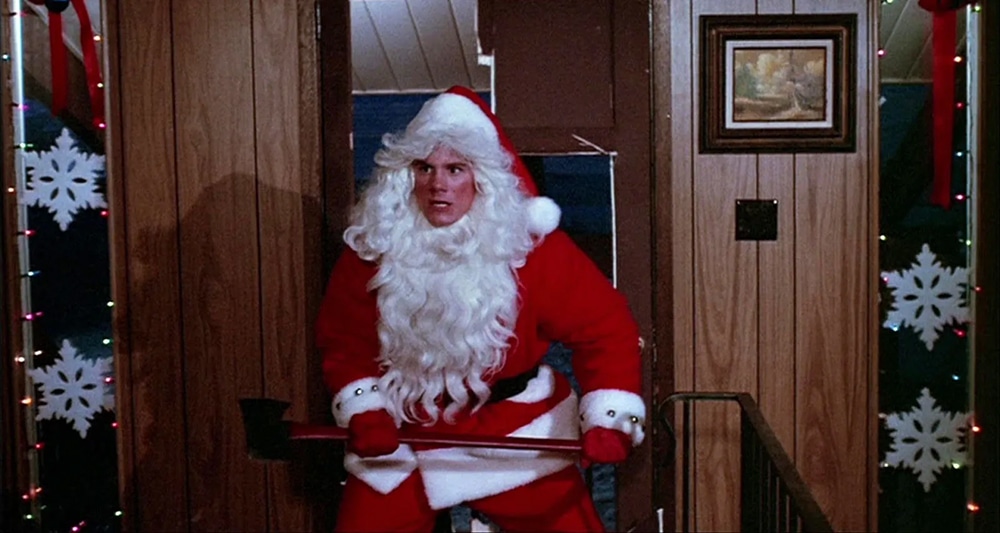
Places Banned:
This caused significant controversy in the United States, resulting in the film being pulled from theaters shortly after release.
What’s the Deal?
When the marketing campaign for director Charles E. Sellier Jr.’s Christmas-themed slasher Silent Night, Deadly Night began making marketing rounds on television, parents everywhere were sent into a good old-fashioned tizzy. How could someone make Santa Claus scary?!
Hilariously released in the wake of the uber-dark 1980 Maniac-flavored Christmas Evil, Silent Night, Deadly Night was met by mobs of enraged parents at the local cinemas, who fiercely protested the film to the point that Tri-Star Pictures quickly pulled the film from rotation and issued a statement from producer Ira Barmak expressing his shock over the outrage lobbed at the film.
Making things worse for this yuletide slasher, the backlash grew when Siskel and Ebert unleashed a pulverizing tirade on both the film and those who were involved in the production, further tarnishing this festive freakout’s already soiled reputation.
A few years later, Silent Night, Deadly Night attempted to make a comeback, but the campaign to bring it back to the big screen fizzled.
Funny enough, now the film is available at your local Best Buy on Blu-ray, and it has become something of a minor classic within the slasher subgenre.
Should I See It?
Hell yeah!
SILENT NIGHT, DEADLY NIGHT is a nasty little hunk of coal from a mentally unstable ol’ St. Nick. Click To Tweet
It’s impressively greasy for a film churned out by a studio like Tri-Star Pictures, and it makes no apologies for its onslaught of gruesome violence, which includes beheadings and antler impalement. Plus, good luck scrubbing the image of a sadistic Santa sexually assaulting our main character’s mother.
It may not all add up to be AS iconic as other entries in the slasher library, but Silent Night, Deadly Night is a glistening Christmas gift for those who have grown weary of re-runs of It’s a Wonderful Life.
7. The Last House on the Left (1972)
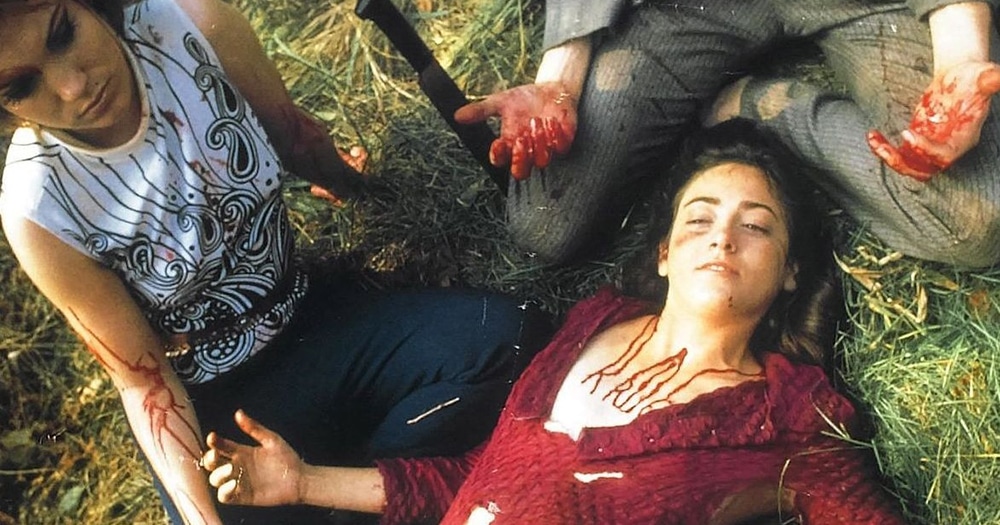
Places Banned:
This caused significant controversy within the United States upon release, with many calling for it to be removed from theaters. It was ultimately banned in the United Kingdom and later deemed “video nasty.” It’s a film that remains controversial to this day.
What’s the Deal?
A loose remake of Ingmar Bergman’s 1960 arthouse classic, The Virgin Spring, The Last House on the Left marked the directorial debut of legendary horror filmmaker Wes Craven, and what an introduction it turned out to be.
About as gritty as this grindhouse gruel comes, The Last House on the Left became famous for its captivating promotion material that reassured the brave patrons out that there “to avoid fainting, keep repeating, ‘it’s only a movie…’”
Indeed, The Last House of the Left does brim with some truly repellant content, with many critics at the time recoiling in utter disgust at its brute force barbarity and its stomach-churning sexual violence that continues to make you hide your eyes to this day.
While many were quick to dismiss The Last House on the Left when it first rolled across movie screens, some raced to defend this strange hybrid of depravity and weirdly quirky comedy. The most famous of its advocates was Roger Ebert, who awarded the film three and a half stars out of four and made the argument that the film was infinitely better than many would initially think.
THE LAST HOUSE ON THE LEFT remains an elusive exploitation classic that continues to incite unfiltered shock. Click To Tweet
Should I See It?
Given this is the directorial debut from Wes Craven, it’s highly recommended that you seek it out and give it a watch.
While some bits are severely dated, the film still manages to push every button imaginable. The shockingly realistic violence strengthens its overall impact, fully warranting that memorable marketing tagline that boomed over every trailer.
A switchblade-sharp analysis of the savagery that lurks in all of us, The Last House on the Left’s main antagonist would go on to inspire Craven’s dream demon Freddy Kruger, lifting the name from “Krug,” the leader of the film’s homicidal pack of monsters.
The film is permanently etched in the upper echelon of the horror genre and even nabbed a remake in the early 2000s.
8. I Spit on Your Grave (1978)
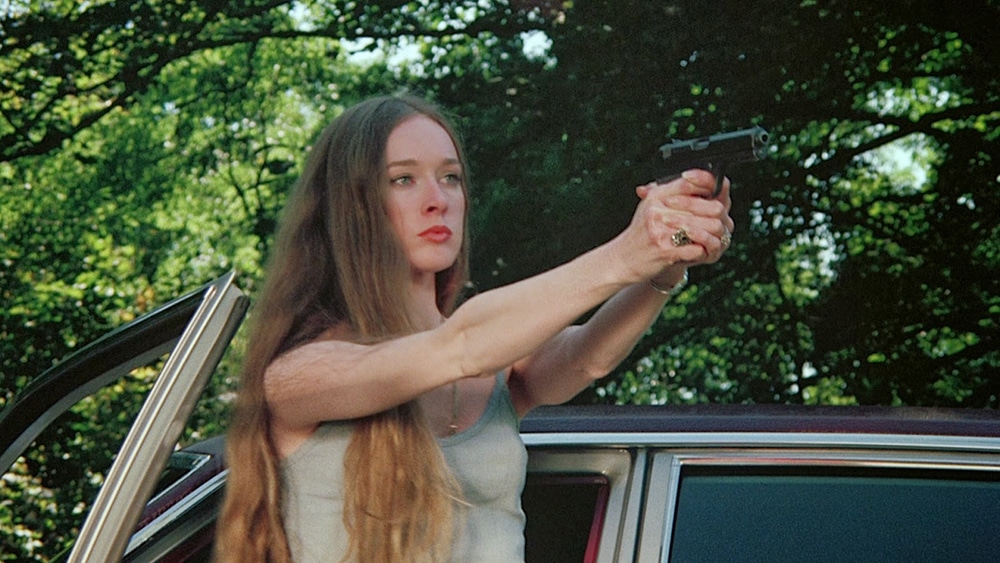
Places Banned:
Banned in West Germany, Ireland, Norway, and Iceland; it was also initially banned in Canada. Remains unavailable in Ireland to this day. Branded “video nasty” in the United Kingdom. Released but heavily censored in some places, including Australia.
What’s the Deal?
Based on a hair-raising experience by writer and director Meir Zarchi, who happened upon a young woman in New York City who had been raped and beaten, I Spit on Your Grave is an unblinking portrait of the violence that flat-out refuses to pull any of its punches.
Famous (or infamous?) for its nearly thirty-minute gang rape sequence, I Spit on Your Grave demonstrates a level of cruelty that makes it easy for many to see why this film, which has also gone under the title of Day of the Woman, was met with so much controversy when it hit screens.
Many critics were quick to point a finger at Zarchi’s vision, labeling it an arduous experience that glorified rape. Leading the charge against the film was Roger Ebert, who attacked the production values, deemed it one of the most “depressing” experiences of his life, and went on to sum it up as a “vile bag of garbage.” Along with Siskel, they would go on to label it one of the worst films of 1980, which was the year the film was widely distributed.
No doubt, its extended rape sequence, which also involves the participation of a mentally challenged young man, is enough to leave many in a daze. Whether it’s Camille Keaton being savagely beaten to a bloody pulp or the blood-soaked castration scene, the film packs gruesome jabs of violence sure to leave you cringing.
Since it debuted, there have been many critics that have gone on to argue in the film’s favor, with it ultimately being labeled a feminist film, a far throw from the masses who claimed it was glorifying its subject matter.
Should I See It?
Without question, I SPIT ON YOUR GRAVE is one of the leanest and meanest toughies to claw its way out of the grindhouses of the ‘70s and ‘80s. Click To Tweet
Much of the film’s power comes from Keaton, who throws herself entirely into her role and owns nearly every single frame of Zarchi’s nightmare. While I’d be hesitant to recommend it to the extremely sensitive, I do feel that I Spit on Your Grave is worth the hell it puts you through, especially when you understand Zarchi’s real-world inspiration for it.
In 2010, the film was given a slick, torture porn remake that led to two sequels. In 2019, Zarchi would make a direct sequel to the original, even going so far as to bring back Keaton.
Yet when all is said and done, I Spit on Your Grave 1978 remains perhaps the ultimate rape-revenge horror movie, one willing to tear you to shreds.
9. Saló, or the 120 Days of Sodom (1975)
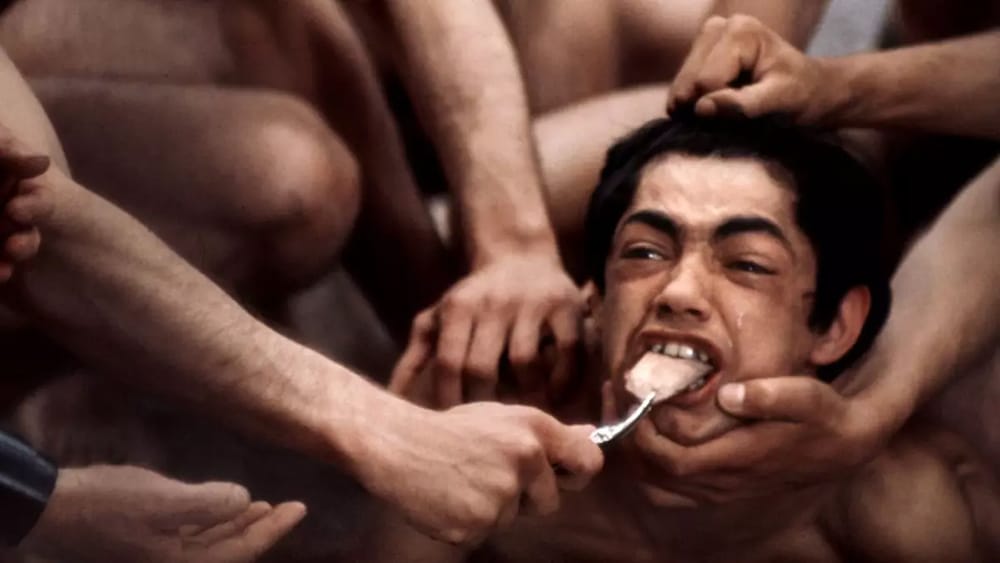
Places Banned:
Banned in Australia and New Zealand, it also faced heavy backlash and censorship in the United Kingdom. It was initially released in Italy, only to be withdrawn shortly after release. This film has been banned in many countries the world over, even facing extreme controversy in the United States. To this day, it remains heavily provocative and debated for its artistic merit.
What’s the Deal?
In 1975, renowned Italian filmmaker Pier Palo Pasolini shocked the world with the release of Saló, or the 120 Days of Sodom, based on the novel 120 Days of Sodom by Marquis de Sade. It would go on to ignite fury all over the world, even leading to Pasolini’s gruesome death in November 1975.
Set in 1944 in Facist-occupied Italy, Saló stands as one of the most demanding and harrowing films one is ever likely to encounter.
Ridiculed for its graphic sexual content and supremely violent conclusion, Pasolini’s film remains hotly debated by many, including Martin Scorsese, over its alarmingly explicit content and if the film possesses any artistic merit. It’s even gone on to receive a lavish Blu-ray release courtesy of the fine folks over at the Criterion Collection, adding significant clout to the film’s art house legacy.
Branded as one of the “sickest films of all time,” SALÓ remains a bruising work that many will consciously avoid or denounce. Click To Tweet
Its depictions of sexual violence, which are often times inflicted on what is implied to be minors, remain one of the most difficult watches on the market, even if Pasolini is slyly dissecting the dehumanizing grip of Fascism and casting light on the darkest corners of human nature.
Due to its unflinching visuals, the film found itself in hot water here in the States. In 1994, the film sparked outrage in Cincinnati, Ohio, after an undercover police officer obtained the film from a bookstore, who then turned around and attempted to charge the owners with “pandering.”
Should I See It?
Ah, there’s the million-dollar question, one still asked by major cinema outlets today, including Slate.
Due to its severity, the debate stands that only those who are serious about the history of cinema and film criticism should subject themselves to Pasolini’s searing compositions. I believe I would remain firmly in that camp, as certain moments are downright unspeakable, even if Pasolini softens the blows with wide shots that keep you at a detached distance.
Even if you choose to watch the film, there is an unshakable darkness that sticks with you long after you’ve finished it. It’s about as easy to digest as an all-you-can-eat buffet of human feces.
10. Land of the Dead (2005)

Places Banned:
Ukraine.
What’s the Deal?
In 2005, the zombie genre was enjoying a well-deserved resurgence within the mainstream, with the ultimate treat being a big-budget magnum opus from the man responsible for laying the foundations for the modern zombie film.
Twenty years after George A. Romero released the ultra-bleak Day of the Dead, Romero finally landed the moola to make what was billed as the ultimate zombie masterpiece, Land of the Dead. Given a wide release, critics and fellow filmmakers have sung the film’s praises, although some fans at the time grumbled over the film’s cartoonish approach and over-reliance on CGI gore, which eroded some of the magic of Romero’s previous films that sickened with their slimy practical effects.
Meanwhile, over in Ukraine, the arrival of Land of the Dead wasn’t met with open arms.
The film found itself banned from theaters due to its depictions of cannibalism. It was said that the film sparked memories of the Holodomor, a famine that struck in the early-1930s and resulted in widespread cannibalism. It was said that at the time of its release, any theater that dared show the film would be met with criminal prosecution.
Should I See It?
Yes, Land of the Dead is a gloriously vicious return for Romero, made even more special because the famously independent filmmaker was finally getting to demonstrate his talents with the backing of a major studio.
Still, it stands as probably the most violent within Romero’s Dead series, with some of the violence trimmed out and the digital blood rendered black in order to snag an R-rating.
A smart examination of post-9/11 America, LAND OF THE DEAD is a sharp apocalyptic actioner that deserves its place in horror history. Click To Tweet
If this isn’t enough morbid mayhem for you, make sure you stay tuned for Part II, where I’ll deliver another handful of controversial flicks sure to scar your minds!


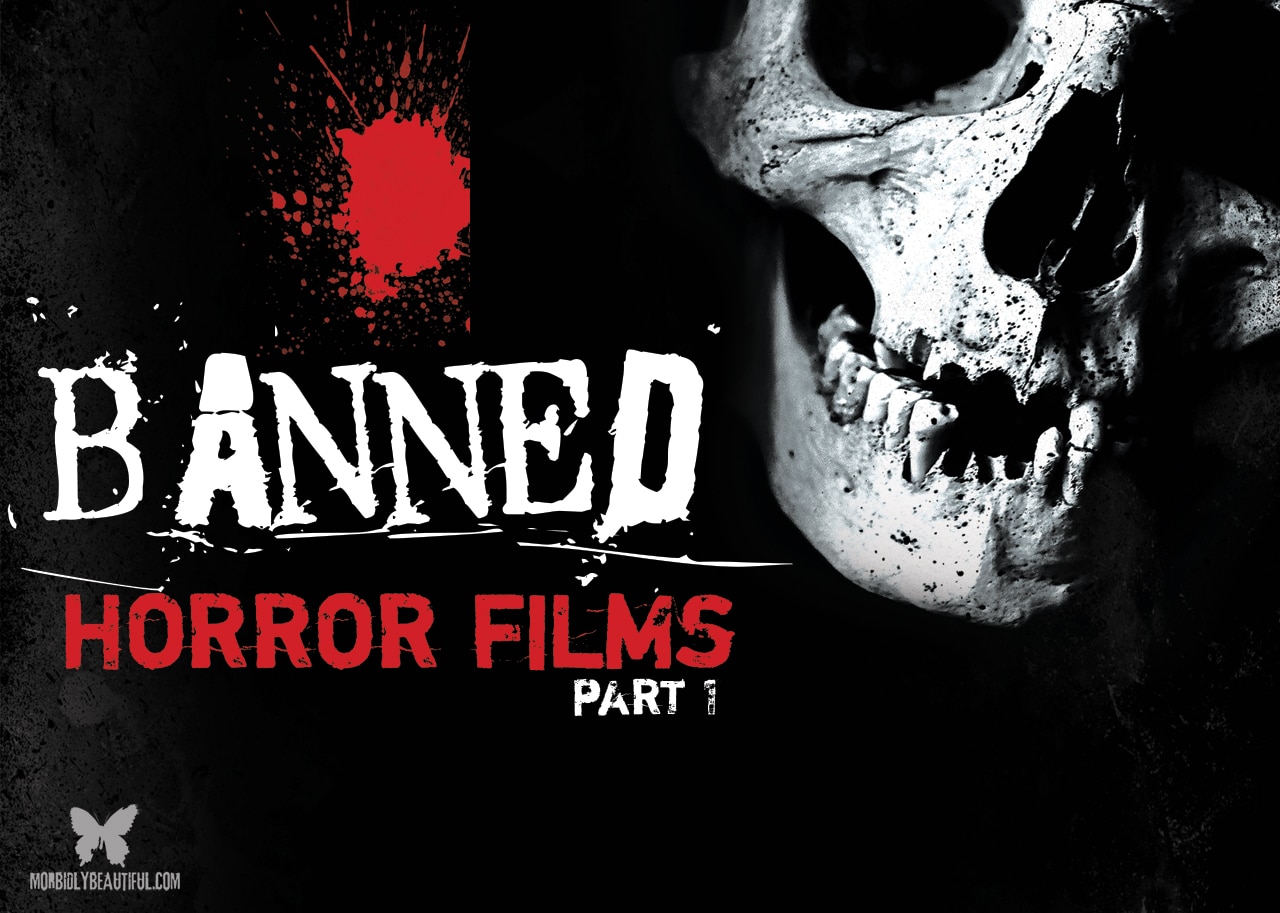
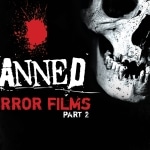
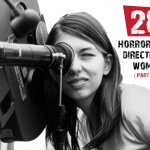

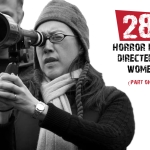




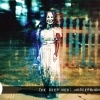
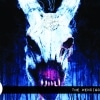

Follow Us!